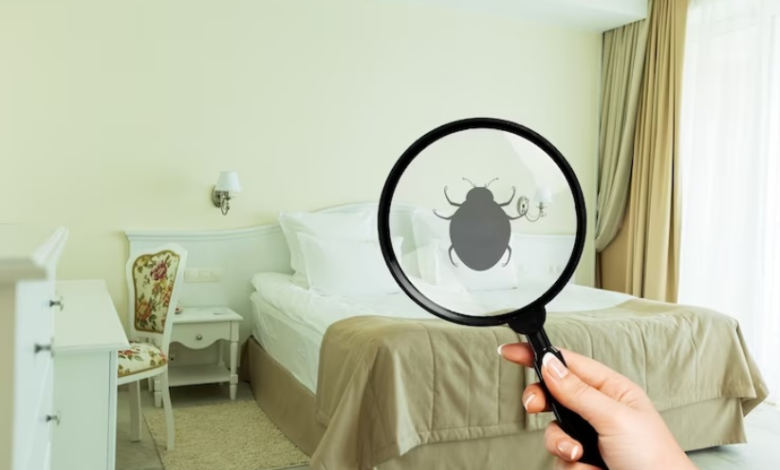How to Deal with Bedbugs in Rental Properties

Bedbugs are a nightmare for both tenants and landlords. These tiny, blood-sucking pests can quickly infest a rental property, causing discomfort, health concerns, and financial strain. If left untreated, a bedbug problem can escalate, leading to legal disputes and costly extermination processes.
Whether you’re a tenant dealing with an infestation or a landlord responsible for maintaining a pest-free property, knowing how to handle bedbugs effectively is crucial. This guide covers prevention, identification, treatment, and legal responsibilities to help you manage bedbug issues in rental properties.
1. Understanding Bedbugs
Before tackling an infestation, it’s essential to understand what bedbugs are and how they operate.
- Appearance: Bedbugs are small, reddish-brown insects about the size of an apple seed. They are flat and oval-shaped but swell after feeding.
- Behavior: They are nocturnal and hide in cracks, mattresses, furniture, and electrical outlets during the day.
- Signs of Infestation: Look for tiny blood spots on sheets, dark fecal stains, shed skins, and a musty odor. Bites on the skin (often in a line or cluster) are another indicator.
2. Preventing Bedbugs in Rental Properties
Prevention is the best way to avoid a full-blown infestation. Both landlords and tenants should take proactive steps.
For Landlords:
- Regular Inspections: Conduct routine checks between tenancies and during maintenance visits.
- Educate Tenants: Provide information on how to prevent bedbugs, such as avoiding second-hand furniture and inspecting luggage after traveling.
- Use Protective Covers: Install mattress and box spring encasements to reduce hiding spots.
- Seal Cracks and Gaps: Repair wall cracks, baseboards, and furniture to eliminate hiding places.
For Tenants:
- Inspect New Furniture: Avoid bringing in used mattresses or upholstered items without thorough inspection.
- Travel Precautions: Check hotel beds and luggage before returning home. Wash clothes in hot water after traveling.
- Minimize Clutter: Reduce hiding spots by keeping living spaces tidy.
See also: Home Loans with an Overdraft Facility: What You Need to Know
3. Identifying a Bedbug Infestation
Early detection is key to controlling bedbugs. If you suspect an infestation, act quickly.
- Check Common Hiding Spots:
- Mattress seams and tags
- Bed frames and headboards
- Furniture joints and upholstery
- Electrical outlets and baseboards
- Behind wallpaper and picture frames
- Use Detection Tools:
- Bedbug interceptors (placed under bed legs)
- Flashlight and magnifying glass for close inspection
- Professional inspections if needed
4. Steps to Take When Bedbugs Are Found
Once bedbugs are confirmed, immediate action is necessary.
For Tenants:
- Notify the Landlord Immediately – Report the issue in writing and request bedbug control ( væggelus bekæmpelse ).
- Avoid DIY Treatments – Over-the-counter sprays can scatter bedbugs, worsening the problem.
- Prepare for Treatment – Follow exterminator guidelines (e.g., washing bedding, vacuuming, decluttering).
- Isolate Infested Items – Seal affected belongings in plastic bags to prevent spreading.
For Landlords:
- Respond Promptly – Arrange for a professional inspection and treatment.
- Hire Licensed Exterminators – DIY methods are often ineffective; professionals use heat treatments, pesticides, or fumigation.
- Cover Costs (If Responsible) – Check local laws; in many places, landlords must pay for extermination unless negligence is proven.
- Notify Neighboring Units – Bedbugs spread easily; adjacent units should be inspected.
5. Legal Responsibilities and Tenant Rights
Bedbug disputes can lead to legal issues. Understanding responsibilities helps avoid conflicts.
Landlord Responsibilities:
- Most states require landlords to provide habitable living conditions, which includes pest control.
- If the infestation existed before the tenant moved in, the landlord is typically responsible for treatment.
- Failure to address bedbugs may result in tenant lawsuits, rent withholding, or lease termination.
Tenant Responsibilities:
- Tenants must report infestations promptly.
- If the tenant caused the infestation (e.g., bringing infested furniture), they may be liable for costs.
- Tenants should cooperate with extermination efforts (preparing the unit, allowing access).
Lease Agreements:
- Some leases include pest control clauses specifying who handles infestations.
- Landlords cannot retaliate against tenants for reporting bedbugs.
6. Effective Treatment Options
Professional extermination is the most reliable solution. Common methods include:
- Heat Treatment – Raises room temperature to lethal levels (120°F+), killing bedbugs in all life stages.
- Chemical Treatment – Uses EPA-approved pesticides; may require multiple visits.
- Steam Cleaning – Kills bugs on contact in mattresses and furniture. For more read https://vaeggelus-fri.dk/
- Encasements – Sealing mattresses and box springs traps remaining bugs inside.
Post-Treatment Steps:
- Monitor for Reinfestation – Use interceptors and regular inspections.
- Avoid Reintroduction – Be cautious with second-hand items and travel.
- Follow-Up Treatments – Some eggs may survive initial treatment, requiring a second round.
7. Preventing Future Infestations
After eliminating bedbugs, ongoing prevention is necessary.
- Regular Inspections – Landlords should schedule periodic checks.
- Tenant Cooperation – Encourage reporting of early signs.
- Seal Entry Points – Repair cracks and install door sweeps to reduce hiding spots.
8. Myths About Bedbugs
Misinformation can hinder effective treatment. Common myths include:
- “Bedbugs only infest dirty homes.” – False; they thrive anywhere with blood hosts.
- “They spread diseases.” – No evidence suggests they transmit illnesses, but bites can cause itching and allergies.
- “They can be starved out.” – Bedbugs survive months without feeding; professional treatment is necessary.
Conclusion
Dealing with bedbugs in rental properties requires prompt action, cooperation between landlords and tenants, and professional extermination. Prevention, early detection, and understanding legal responsibilities are key to managing infestations effectively.


